May 16, 2025 | 16:53 GMT +7
May 16, 2025 | 16:53 GMT +7
Hotline: 0913.378.918
May 16, 2025 | 16:53 GMT +7
Hotline: 0913.378.918
More than 20 days after Typhoon No. 3 swept through Cat Ba National Park, its lingering damages continue to severely affect both the forest areas and the forest protection stations located across the island.
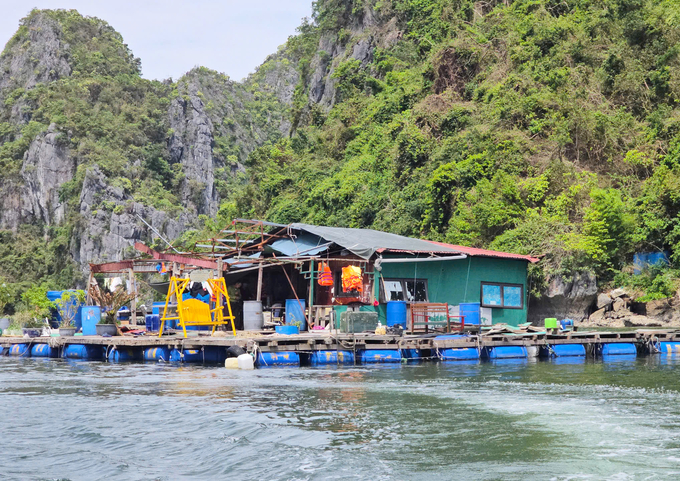
Viet Hai Forest Protection Station on October 4, 2024. Photo: Dinh Muoi.
As scheduled, we boarded a boat and headed toward the island commune of Viet Hai. After nearly 20 minutes at sea, the floating platform where the local forest protection officers operate came into view, revealing a scene of destruction—tattered tarps, exposed frames of huts, scattered foam buoys, and driftwood.
This is one floating forest protection station out of the total four within Cat Ba National Park, alongside the Gio Cung, Ba Dinh, and Van Ta stations. At present, only five members staff the station. They are responsible for managing a vast core forest and sea area that spans over 2,247 hectares.
As he helped us onto the platform, Vu Van Duy, the officer in charge of Viet Hai Forest Protection Station, advised, “Watch out for the damaged planks; the platform was badly shaken by the storm.” We saw that the entire kitchen area and part of the awning had lost their roofs, leaving only bare metal frames. In the right corner, an old bed, nearly collapsed, held a soggy green mattress.
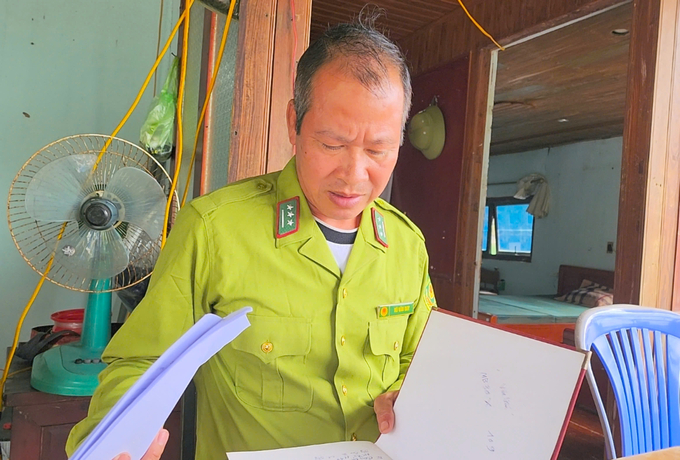
Vu Van Duy reviewing the patrol and forest fire prevention logs. Photo: Dinh Muoi.
The station set up two temporary tarps, one for the guest reception area and another for the kitchen, to manage daily activities. When we arrived, a station officer peeked out from under a tarp to greet us before quickly returning to preparing lunch for the team, who were due back from their forest patrol.
Vu Van Duy explained that the typhoon caused extensive damage to the station's infrastructure. In addition to the wrecked floating platform and the blown-away roof, the solar panel—the station's sole source of electricity—was also lost. The crew was mostly paralyzed during the first few days. The station only resumed operations after the Cat Ba National Park Management Board provided some auxiliary equipment. However, they continue to face significant challenges.
"We are currently facing electricity shortages as the solar panel blown away by the typhoon has only been temporarily replaced, providing us with limited power. Regarding water supply on the floating platforms, we have installed new water tanks, but this is also a temporary solution," Duy shared.

Local forest protection forces purchased a new solar pane to quickly restore power to the station's operations. Photo: Dinh Muoi.
At other marine forest protection stations in the park, stationed crews have completed basic repairs and resumed operations. However, these stations have limited access to essential infrastructure, equipment, and supplies. Notably, the Gio Cung and Ao Ech stations have suffered irreparable damages. Subsequently, their crews have proposed the stations for decomission and remain on standby for the construction of new facilities.
According to Do Xuan Thiep, Head of Cat Ba National Park's Forest Protection Division, out of the park's total 12 forest protection stations, two have sustained irreparable damages, measuring between 70 and 100%. On the other hand, damage to the Cat Dua station is estimated at 30 to 50%, whereas damage to the Khoan Cao station is estimated at less than 30%.
Following the typhoon, Cat Ba National Park requested the Hai Phong City People's Committee to approve the decommissioning of the two irreparable forest protection stations. Conversely, stationed crews are responsible for making temporary repairs to the remaining stations with less severe damage, thereby ensuring safety, functionality, and living conditions.
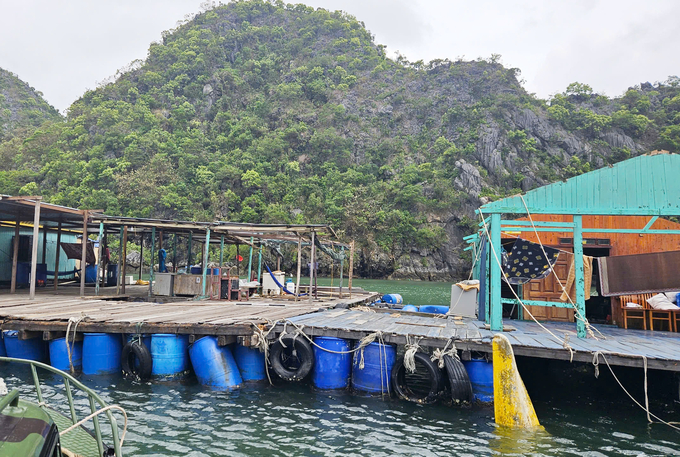
A marine forest protection station sustained irreparable damages, measuring between 70 and 100%. Photo: Dinh Muoi.
"Forest protection stations are distributed across the Cat Ba archipelago and its gateways. As a result, they suffered the full force of the storm, with the marine stations being the most affected. The majority of the stations lost their roofs, and the floating stations are now undergoing temporary repairs, with stationed crews purchasing tarps and equipment for provisional use after the storm," explained Thiep.
Thiep further noted that Cat Ba National Park's forest protection officers lost two boats to Typhoon No. 3, while three others suffered hull damage from collisions. Forest patrols, protection, and fire prevention activities are critical in the aftermath; however, the damaged boats, which are essential for sea-based operations, have severely hindered these efforts. "Our most crucial tools are boats for transportation, patrol, forest protection, and fire prevention. As a result, restoring these boats is an immediate priority to resume our operations," he emphasized.
Cat Ba National Park has also proposed the Hai Phong City People's Committee to promptly authorize the reconstruction of the damaged forest protection stations. The repair will enable the stationed officers to effectively manage and protect the natural resources and biodiversity of this World Heritage Site and Biosphere Reserve.
After leaving the marine stations, we toured the forests around Viet Hai island commune and the central administrative area of Cat Ba National Park. Along the roads, local forest protection forces have efficiently cleared the fallen trees. In the heavily damaged forest areas, tree leaves had begun to wither, which can act as a source of fire, especially in planted forest areas.
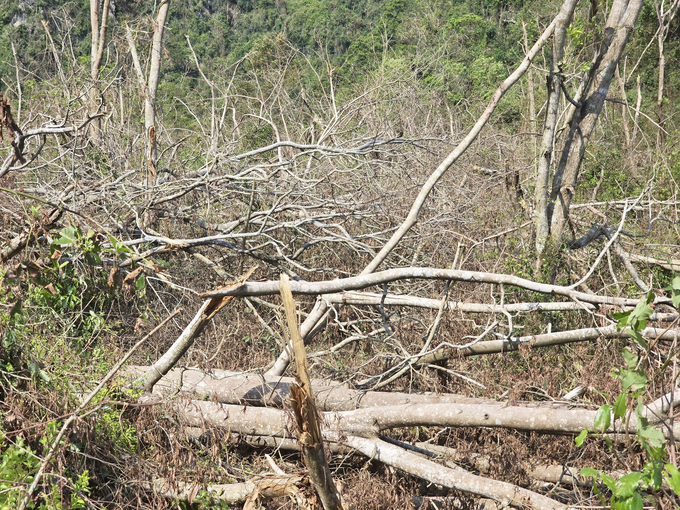
The heavily damaged forests, with trees drying and becoming highly flammable, pose a significant fire risk. Photo: Dinh Muoi.
According to Pham Van Phuc, Deputy Director of Cat Ba National Park, the park spans 17,362 hectares, encompassing a diverse forest-marine-island ecosystem with 362 rare animal species and 1,590 plant species. Typhoon No. 3 caused considerable damages to the natural forest area under the management of the park. In the planted forest areas, preliminary estimates indicate that around 70% of the trees were uprooted or broken, including trees that are over 15 years old. At the nursery, 80% of the trees were toppled, while the remaining 20% suffered branch breakage or complete leaf loss.
"The most significant damage occurred in the planted forest areas within the park’s central zone. We will assess the extent of the damage in the immediate future to promote effective management and protection and organize additional public awareness campaigns to promote forest protection and fire prevention measures as the forest begins its natural recovery," Phuc explained.
Phuc also noted that nearly a month after the typhoon, despite the stable weather conditions, the risk of wildfires remains a major threat to the damaged forests, especially the planted areas in Cat Ba National Park.
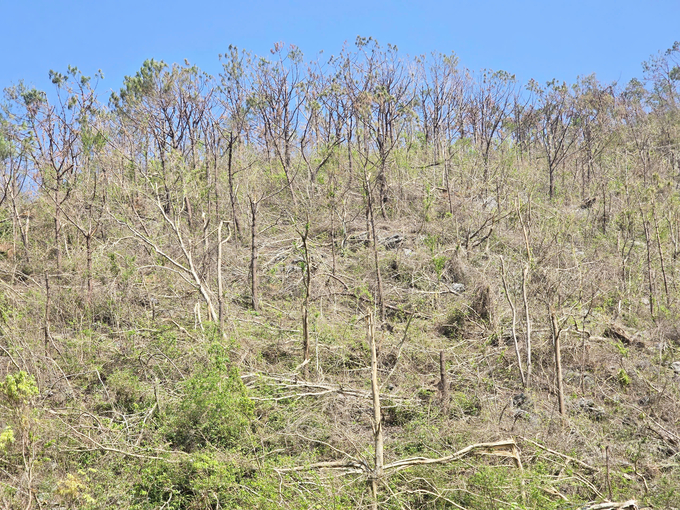
The risk of wildfires is extremely high in planted forest areas. Photo: Dinh Muoi.
In addition, daily activities such as waste burning and outdoor fires frequently occur in planted forests adjacent to residential areas. Without monitoring, these actions can serve as direct catalysts for wildfires.
In response to this challenge, the Cat Ba National Park has tasked its forest protection stations with a dual mission: assessing damage and implementing recovery measures in addition to conducting patrols and promoting forest protection and fire prevention efforts.
Forest protection officers have collaborated with local authorities and community members to raise awareness regarding the dangers of lighting fires, smoking near forested areas, or leaving outdoor fires unattended. They also advised the residents against waste and grass burning.
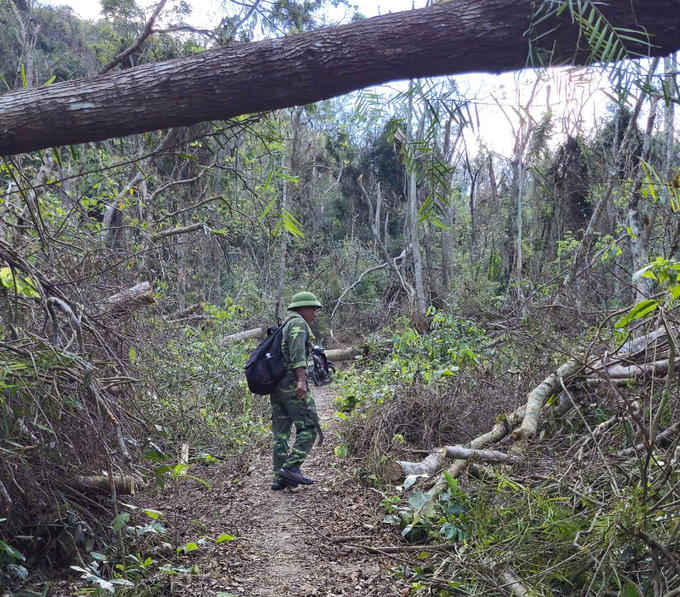
Local authorities regularly conduct patrols to protect the forest, with a focus on preventing wildfire. Photo: Dinh Muoi.
Local authorities have organized patrols in areas with a high risk of fire, such as pine forests, protection forest areas, and communities near forested regions. They aim to promptly detect and mitigate fire hazards as they occur.
With the return of stable and increasing tourist numbers in Cat Ba, the National Park has deployed personnel to guide and educate visitors, with an emphasis on strictly prohibiting camping fires or cooking near planted or primary forests.
"Hot weather and dry winds have set in after the typhoon. In several forest areas, the abundance of dry trunks, fallen branches, and leaves has created a significant amount of combustible material, further increasing the risk of fire. Consequently, in addition to assessing damage and implementing recovery measures, we must also focus on forest fire prevention efforts," Phuc stated.
Translated by Nguyen Hai Long
![Multi-channel, multi-directional Vietnamese agricultural markets: [7] Deep processing makes global reach easy](https://t.ex-cdn.com/nongnghiepmoitruong.vn/608w/files/huytd/2025/05/16/2946-che-bien-sau-chia-khoa-vang-nang-tam-nong-san-viet-tren-ban-do-the-gioi-080603_110-093858.jpg)
(VAN) The application of deep processing technology is helping Vietnamese agricultural products enhance their value, create competitive advantages, and open doors to conquer global consumers.
![Multi-channel, multi-directional Vietnamese agricultural markets: [6] Agri products go online](https://t.ex-cdn.com/nongnghiepmoitruong.vn/608w/files/content/2024/12/10/1-113313_954.jpg)
(VAN) Bringing agri products onto e-commerce platforms is an effective way to build a brand that many businesses, cooperatives, and agricultural production households are doing.

(VAN) Veterinary training should focus on quality, not just quantity. Veterinarians also need more options to pursue specialized training.
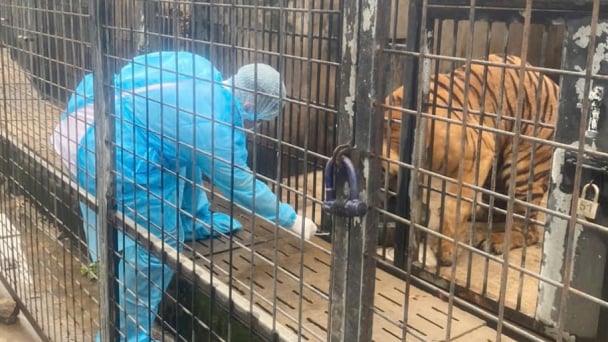
(VAN) The veterinary industry needs to be viewed objectively and further invested in to properly demonstrate its role and importance in the new context.

(VAN) The number of veterinarians graduating each year is not enough to meet actual needs, hence a difficult problem for the growing livestock industry.
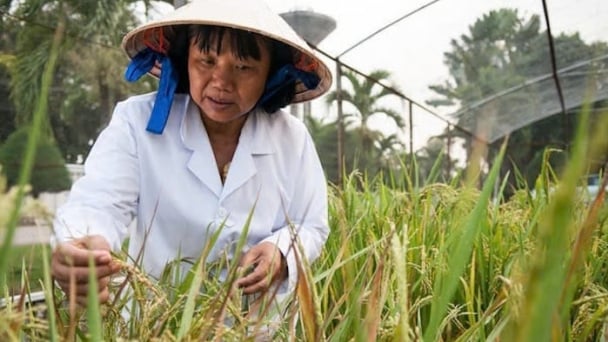
(VAN) The strategic partnership between Cambodia, the Philippines, Vietnam, and CGIAR ensures that innovative solutions effectively address national priorities for food system development.
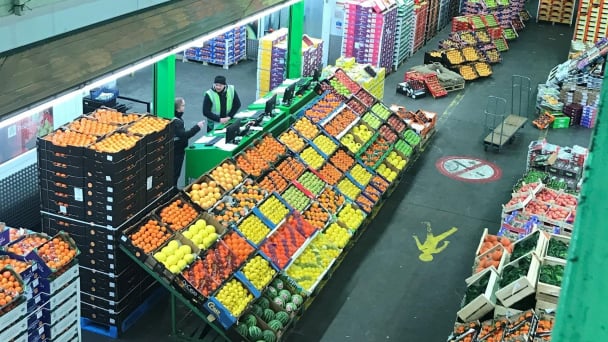
(VAN) This was affirmed by the UK Minister of State at the Department for Environment, Food and Rural Affairs during a working session with Deputy Minister Tran Thanh Nam on May 13.